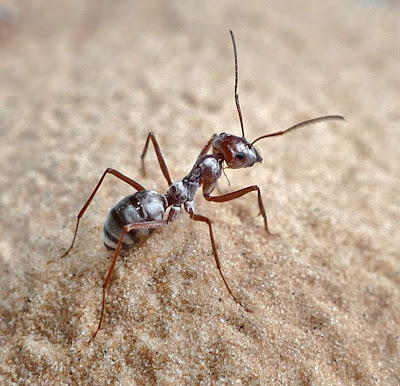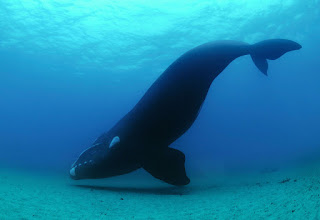Bogong Moth (Agrotis Infusa) ~ Longing for True North
A few months ago I was traveling through the mountains of Honduras. I was there to speak to farmers about plans to restore their forests. I was staying in a tiny village high in the hills at a camp called Granadilla, where most people get around on horseback due to the rugged streets. One afternoon I was in the camp when I heard all the people around me start shouting, “Zapato! Zapato!” In Spanish, ‘zapato’ means ‘shoe’. I wondered, why is everyone shouting about shoes?! Then I noticed a small dog running excitedly from person to person. Everyone was smiling and clapping. Apparently, this little dog was named ‘zapato’ because whenever she found a shoe, she would steal it and run away with it. Zapato had been adopted by the people of the Granadilla camp and they were all very fond of her. But the little dog had accidentally been sold to a man passing through Granadilla, and he lived far away in a town called Tintel. The people were very sad and assumed they would never see their pet again. Yet on this day, the dog made her triumphant return. She had mysteriously found her way through the jungles of La Paz all the way back to the Granadilla camp, more a 30-minute drive away by car. The camp was buzzing with questions: How had Zapato been able to survive in the jungle that long? How had she been able to navigate her way?
Many animals display an innate directional knowledge. Moths and butterflies, for instance, take massive journeys to find a place they have never been before. They arrive at just the right area and at just the right time, each year, like clockwork. One group of scientists in Australia tried to understand which unseen force was guiding young Bogong moths. They did a study as the moths reached the age of their migration and found that the moths consistently flew northwards. Yet the moths couldn’t see the sky, so they weren’t using the moon or stars as a cue. They clearly weren’t using landmarks since they were in a laboratory. How did they have a sense of true north? The researchers stated, “naïve Bogong moths begin an immense journey to a place they have never previously visited, potentially using a variety of sensory cues to follow a genetically inherited preprogramed route and to stop at the correct destination” (Warrant 2016). What those sensory cues are remains a mystery. Some scientists posit magnetoreception by which animals can sense the magnetic fields of our planet. Magnetoreception tests have been done on a wide range of creatures using a fluxgate magnometer, which is perhaps the most futuristic name for a scientific device! Diverse organisms ranging from sea slugs (Willmer 2017) to seagulls (Drickamer 2001) to bacteria (Xu 2017) have shown a sensitivity to magnetic fields. Yet, while we know animals are capable of magnetoreception, it’s still not clear at all how it happens. As biophysics researcher Sönke Johnsen writes, “no one knows with certainty how any animal perceives magnetic fields. Finding this mechanism is thus the current grand challenge of sensory biology.” (Johnsen 2008) As with so many things in biology, we discover the rabbit’s hole only to realize we must now see how far down it goes.
Like the magnetoreception in animals, humankind has a sort of unseen sensory perception. We may not be able to orient ourselves towards true north, like a young moth finding its way back home, but we have been endowed with certain spiritual senses that are meant to point us back to God. Paul appeals to this innate sense when he speaks to a crowd of polytheistic Athenians at the Areopagus. He explains that God gives life to and sustains every created thing. Then he speaks to them of God’s allotted periods and boundaries for the peoples of earth, so that “they should seek God, and perhaps feel their way toward him and find him. Yet he is actually not far from each one of us.” (Acts 17v27) Paul then goes on to describe this God not as a deity made of gold or silver, but a living God who raised Jesus Christ from the dead and will resurrect us, His children, to live with Him forever. In short, Paul was offering an answer to the sense of ‘true north’ the Athenians experienced. They felt a longing for home, for Heaven, because it is a real place. Deep in every human heart is a sense that we are meant to walk on streets of gold, not of broken concrete. We are deeply bothered by pain, illness, sorrow, and death, even though these things are a normal part of our existence. At the core of each soul is a longing for a peace and wholeness that this world does not offer. But a moth will never fly if she doesn’t believe her homeland is real. Thus, it takes faith to follow that innate sense God placed into our hearts.
In 1981, Don Richardson published a fascinating book called Eternity in Their Hearts. The book is a compilation of several accounts that tells how indigenous peoples discovered God before the missionaries discovered them. Richardson titled his book after Ecclesiastes 3:11 which says that God has “put eternity into man’s heart”. In Richardson’s view, God created humanity with something I might call a Celestioreceptor—a way to orient not with a magnetic field, but with the transcendent. When pursued, this sense leads us back to God.
The longing for Heaven is not a fairy tale any more than the gull’s urge to fly south for winter. That desire should not be mocked or repressed. It is a deep call to come home, to find our way to the place we were always meant to be—the arms of our loving Savior.
Works Cited
Drickamer, E. A. (2001). Animal behavior. mechanisms, ecology, evolution. Place of publication not identified: Mcgraw-Hill Book Co. 235
Johnsen, S., & Lohmann, K. J. (March 11, 2008). Magnetoreception in animals. Physics Today, 61, 3, 29-35.
Richardson, D. (2014). Eternity in their hearts. Minneapolis, Minn: Bethany House.
Warrant, E., Frost, B., Green, K., Mouritsen, H., Dreyer, D., Adden, A., Brauburger, K., ... Heinze, S. (January 01, 2016). The Australian Bogong Moth Agrotis infusa: A Long-Distance Nocturnal Navigator. Frontiers in Behavioral Neuroscience, 10, 77.
Willmer, P., Stone, G., & Johnston, I. A. (2017). Environmental physiology of animals. Malden: Blackwell. 287
Xu, J., Pan, W., Zhang, Y., Li, Y., Wan, G., Chen, F., Sword, G. A., ... Pan, W. (January 01, 2017). Behavioral evidence for a magnetic sense in the oriental armyworm, Mythimna separata. Biology Open.




Comments